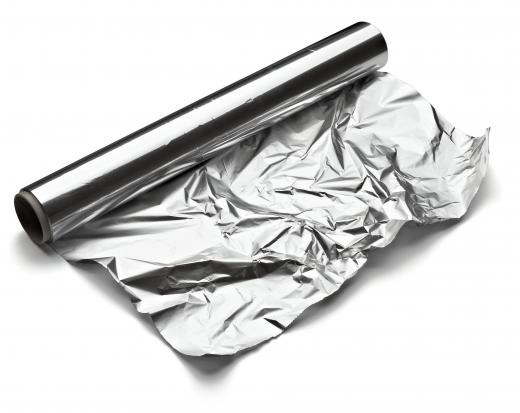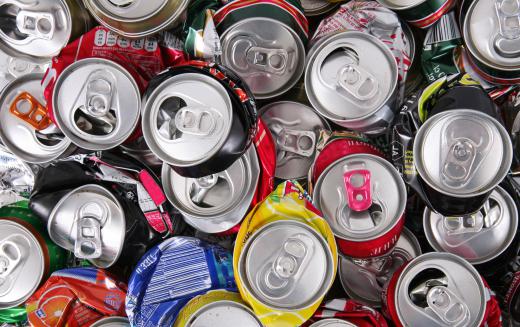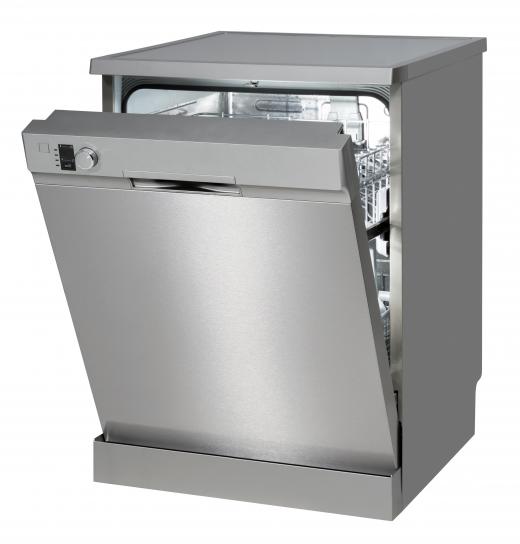A number of items are made from recycled aluminum, including cement, beverage cans, dishwashers, and other aluminum products. This recycled metal is also used in other types of items that many people would not think of, such as makeup products, chemicals, and furniture.
The Aluminum Production Process

Aluminum is produced from bauxite, which is a sedimentary rock with various minerals in it. Bauxite is gathered through open pit mining. The water is taken out of the ore, which leaves a white powder called alumina, or aluminum oxide. This material is made into aluminum.
Bauxite is used in cement, beverage cans, dishwashers, siding on houses, makeup, chemicals, and other aluminum products. Recycling aluminum saves approximately 95% of the energy it takes to produce more aluminum from bauxite, so now about 30% of aluminum products are made from previously recycled items. It is also an efficient process, which takes as little as 60 days for a can to be collected, melted and made into a new can.
Sustainability and Aluminum Recycling

Recycling aluminum is one step in helping humans to achieve sustainability. Sustainability is described as a paradigm shift that leads people to change their priorities and use technology and creativity to meet the needs of the current generation without compromising future generations' ability to meet their own needs as well. By recycling instead of continuously using up natural resources, people can conserve energy and resources to maintain a quality of life that can be shared with generations to come. Because recycling metal does not damage its structure, aluminum can be recycled over and over indefinitely.
Products Made from Recycled Aluminum

Recycled aluminum is made into pie pans, house siding, aluminum foil, cans, small appliances, lawn furniture, automobiles, bicycles, and many other items. Because of its energy conservation benefits, recycling is becoming more popular among those involved in green living. Some types of wine and water bottles are now made with aluminum as well. Nearly all beverage cans are made from aluminum, which were first introduced in the United States in the 1960s.

There are many different ways to use recycled aluminum, in addition to melting it down to be made into new products. Counter tops, jewelry, pet tags, floor tiles, and even a boat that a man used to sail from Hawaii to Japan have been made with aluminum that was recycled. The pull-tabs from soda cans have been made into handbags, necklaces, and even lounge chairs.
The Aluminum Can Recycling Process
Aluminum can recycling is a notion promoted by people trying to live sustainable lives. Due to advances in technology, recycling aluminum has become more efficient and convenient. The metal is shredded and crushed, then melted to make new cans.

Much like glass recycling, aluminum can recycling is a cyclical process that begins once consumers toss the cans into their curbside recycling bins, where it is picked up and shipped off to the recycling plant. In the United States, approximately two out of three cans produced make it to local recycling centers. Upon collection at regional scrap processing plants, the cans are compacted into dense briquettes or bales. These masses can range anywhere from 30 to 1,200 pounds (13.6 to 544 kilograms), and they are shipped off to aluminum companies for melting into new cans.

The compacted masses of cans are stripped of any superfluous layers on the inside or outside of the product container through a burning process. Then they are shredded and crushed into wood chip-sized pieces of aluminum. The pieces are piled into a melting furnace, which combines the recycled metal with new, pure pieces of aluminum.
Once in a molten state, the aluminum is poured into enormously heavy ingots, which is then is rolled into sheets that are 0.01 inch (0.254 millimeters) thick, via the rolling mill. The sheets are then removed, coiled, and shipped to can makers. At this point, the process is complete. The manufacturers produce the can bodies and lids that are passed on to beverage companies that fill them with their product. The finished products ultimately end up in grocery store shelves.
Aluminum Cans: The Most Commonly Recycled Item

Aluminum cans are by far the most commonly recycled item. Over 1,600 million pounds (725,747,792 kg) of cans are recycled per year, compared to 53 million pounds (24,040,396 kg) as recently as 1972. Each can is worth about a penny for a recycling consumer, and Americans now earn about $1 billion US Dollars per year through recycling their aluminum. Each pound of aluminum that is recovered saves the energy resources needed to generate about 7.5 kilowatt-hours of electricity.
